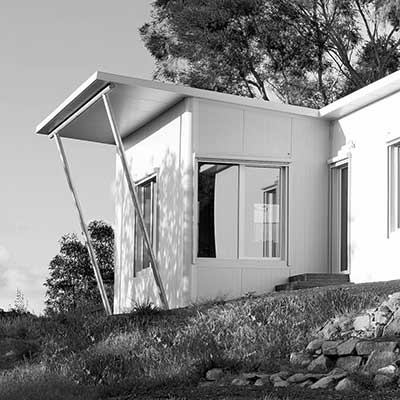
The person who decides to construct a building may be the same person who owns it, operates it, and pays the ongoing bills associated with the building.
It’s like buying a washing machine.
When I was younger, I would buy cheap items, because that was all I could afford. I did not know how to plan for the future. I would look at my bank account and say “this machine is cheaper than the other one, so I will buy the cheap one”.
Over time, I learned the washing machine that I had purchased and installed did not wash the clothes properly. They came out quite wet, so drying was difficult (and expensive if you used a dryer). It broke down often, and before too long, it had to be replaced.
There were costs associated with the cheap washing machine, beyond just the cost of repairs and power consumption. Importantly, it cost my my time. I could have been doing more productive things. There was also an emotional cost – there’s nothing worse than taking a day off work to wait for a tradesperson whose ETA is unknown.
The next time I bought a washing machine, I thought about the problems with the cheap one. I didn’t want to replicate them. I decided to think about the long-term impact of the purchase on my bottom line and on my every day life.
So the next time, I did some research and bought a better brand. It also happened to be more expensive, but it was something that would work really well, be reliable over time, and cost me less to run – something that was a joy to use and did not break down.
That washing machine has paid for itself many many times over. My state of mind is better, my power (and water) bills are better, and my clothes are better.
So how is a washing machine like a building?
A washing machine is like a building because the choice of washing machine involves the same sorts of considerations, and has the same sorts of ramifications.
Let’s say a government department or agency owns and manages a building portfolio. It commissions the design and construction of buildings, maintains them, and pays for the buildings’ power consumption. It also employs people who work in those buildings, and pays for their sick leave, and its business is affected by their productivity levels.
Surely that department would choose the best building, taking everything into account, just like I did with my last washing machine?
Sadly, the answer is often no.
With all the talk about solar power, climate change, and carbon footprint, it is true that many organisations now talk about “sustainability” as an important matter. But what does it mean, and does it really factor into our decisions about buildings?
When it comes down to choice of a building, the question is too often: “how much will it cost?”
This refers typically to the cost of building the structure, not the cost of running it, or maintaining it, or replacing its parts. It also doesn’t mean the cost of employing people, and paying their sick leave, and dealing with low productivity.
Why doesn’t sustainability make it into the purchasing decision more often?
If the builder is a different person from the purchaser, and the purchaser is a different person from the operator, then it is pretty clear that the decision making factors for each person can be different.
But what if all of these roles are taken up by one entity? Shouldn’t we be taking into account all factors more effectively, and making more long-term sustainable decisions? And if we don’t, could it be, at least in part, because of the accounting systems we establish?
Some organisations have a budget for purchasing buildings. That budget assesses construction cost only, and nothing else.
Then they have a different branch which has a budget for maintenance. It spends its budget on maintaining buildings. Nothing else.
A different branch again pays for power consumption. It spends money on electricity or gas bills. Maybe it tries to encourage a reduction in power consumption by asking people to turn off the lights, or rely less on heating or air conditioning, but once the building is up, it will consume what it consumes, and the responsible branch will pay for that consumption.
A different section will pay for employees’ wages, and sick leave. Sometimes, in an effort to create a more sustainable workforce, that section might encourage people to do yoga, or have a work-life balance, so that people are healthier and more productive.
Speaking of productivity, that area is usually dealt with by the employee’s manager. They have a budget for output, and they would like the employees to work more effectively, to improve their figures.
Often the accounting systems completely separate out these divisions. The different aspects are not considered together.
Does climate change make it into our building decisions?
The environmental outcomes of decisions we make about buildings are sadly lacking in many cases. We might not tend to ask what is the impact of a poorly made building on the environment. Does climate change affect our business? Does it affect our bottom line?
While we are concerned about climate change in theory, where do we see it in our budgets?
Do we realise that low energy comfort is a weapon against climate change?
Of course, another connection we often fail to make is that pure self-interest can be better for the planet. Lower power consumption can be a weapon against climate change while lowering our running costs and increasing our comfort and health. The Passive House Standard is the best we can do here, and there is heaps of information available on the net to explain these connections.
Sometimes, there is an analysis of the cost of the building for its life at the time of design or purchase, otherwise known as a “lifecycle analysis”.
A good example of policy around life cycle analysis and the importance of environmental concerns is found with the Department of Defence.
The Department of Defence refers on its website to the Defence Estate Lifecycle Phases, stating: “The Estate Lifecycle is about the systematic and coordinated activities by which Defence manages its assets and their performance, risk and expenditure over the life of the asset to achieve Defence’s strategic plan. The Defence estate lifecycle has four key phases. These have been identified as the following: Plan, Deliver, Operate & Maintain, Dispose.”
When these different aspects are considered together from the outset, a different purchasing decision is likely to follow. Cheap buildings, just like cheap washing machines, just might not make the grade.
In addition to this, Defence is also concerned about the environment. “Defence recognises that effective environmental management is an important part of successfully undertaking Defence activities and ensuring the long-term sustainability of the Australian Defence Force (ADF) capability and the Defence estate. Defence understands its responsibilities in environmental management…The Defence Environmental Policy (DEP) & Strategic Plan (DESP) 2010 – 2014 is endorsed by the Secretary for Defence and the Chief of the Defence Force, with the vision of being ‘a leader in sustainable environmental management to support the ADF’s capability to defence Australia and its national interests’.”
Now there’s an interesting example of decision making factors working together.





